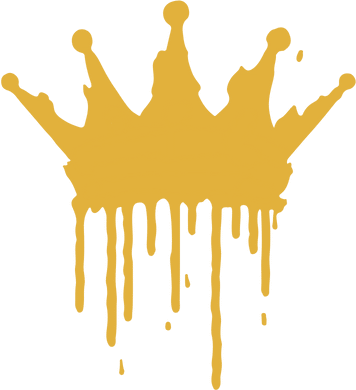Pricing jewelry involves multiple factors, including raw material costs, craftsmanship, gemstone quality, brand reputation, and market demand. Whether it’s a fine jewelry piece with lab-grown diamonds and platinum or a less expensive sterling silver piece, the final price is influenced by several key components.
Let’s break down the most important factors:
1. Raw Material Costs (Metals & Gemstones) #
Jewelry pricing starts with the base cost of materials, including precious metals (gold, platinum, silver) and lab-grown gemstones (diamonds, sapphires, etc.).
Precious Metal Prices (Gold, Platinum, Silver)
- Gold, platinum, and silver prices fluctuate daily based on global markets.
- Jewelry brands adjust pricing based on current metal prices per gram or ounce.
- Platinum jewelry is more expensive than gold due to its higher density and difficulty of workmanship.
- Gold jewelry pricing varies by karat (10K, 14K, 18K, 22K, 24K), with higher-karat gold being more expensive due to greater gold content.
- White gold requires rhodium plating, which adds an additional maintenance and labor cost.
📌 Example of Metal Price Impact
- As gold prices increase, jewelry brands adjust their pricing accordingly. Some brands may not want to be transparent about gold being the primary rough material cost, so lab diamond prices may also rise.
- In 2024, gold was around $1,850 per ounce, but in 2025, gold has risen to over $2,050 per ounce, making new gold jewelry more expensive.
✅ How This Affects Pricing:
- Higher-carat gold jewelry (18K, 22K, 24K) is priced higher than 10K or 14K because it contains more pure gold.
- Platinum jewelry costs more than gold because platinum is denser and harder to work with.
- Sterling silver remains the most affordable fine metal because silver prices have remained stable.
2. Gemstone Value (Lab-Grown Diamonds, Sapphires, Rubies, Etc.) #
The type, size, and quality of gemstones in jewelry significantly impact pricing.
Lab-Grown Diamond Pricing Factors (The 4Cs)
For lab-grown diamonds, pricing is determined by the 4Cs:
- Carat Weight – Larger diamonds are rarer and more expensive per carat.
- Cut Quality – A well-cut diamond enhances brilliance and is priced higher.
- Color Grade – Colorless diamonds (D-F) are more expensive than near-colorless or warm-toned diamonds.
- Clarity Grade – Fewer visible inclusions = higher pricing.
Example of Lab Diamond Pricing Impact:
- A 1-carat IGI-certified round lab diamond (Ideal cut, D color, VVS2 clarity) might cost $1,500 – $2,500.
- A 1-carat IGI round lab diamond (J color, SI2 clarity, Good cut) could be $800 – $1,200.
✅ How This Affects Jewelry Pricing:
- Higher-grade lab diamonds increase jewelry costs significantly.
- Lab-grown diamonds are priced lower than natural diamonds but offer nearly identical beauty.
- Gemstones like sapphires, emeralds, and rubies are priced based on color intensity, clarity, and rarity.
3. Craftsmanship & Labor Costs #
The difficulty of working with different metals and setting stones increases labor costs.
Factors That Increase Craftsmanship Costs:
- Platinum & White Gold Workmanship: More expensive due to the difficulty in casting, polishing, and setting stones.
- Handmade vs. Mass-Produced Jewelry: Due to time and skill, handmade jewelry costs significantly more.
- Engraving & Customization: Custom-engraved or filigree-designed pieces require hours of additional labor.
- Stone Setting Complexity:
- Pavé, bezel, and tension settings require more skill and time than basic prong settings.
- Invisible settings (where stones appear seamlessly placed) cost more due to high-precision work.
✅ How This Affects Pricing:
- Handcrafted platinum rings cost more than cast-made silver rings due to their complexity.
- More intricate settings (halo, micro-pavé) add labor costs compared to a simple solitaire.
4. Brand Reputation & Market Positioning #
- Luxury brands like Cartier, Tiffany & Co., and Harry Winston charge a premium for brand prestige, craftsmanship, and heritage.
- Independent designers and boutique brands often have lower markup but high customization value.
- Online retailers offer better pricing than traditional jewelry stores due to lower overhead costs.
✅ How This Affects Pricing:
- Branded jewelry is priced higher than non-branded jewelry, even if materials are similar.
- Online brands can offer better value since they don’t have the same retail markup as brick-and-mortar stores.
5. Jewelry Markup & Retail Pricing Strategy #
Most jewelry is sold at a markup beyond its raw material and production costs.
Common Jewelry Pricing Markups
| Jewelry Type | Markup Range |
| Mass-market jewelry (mall brands) | 1500-2500% |
| Luxury brands (Cartier, Tiffany, etc.) | 10,000+% |
| Custom & Handmade Jewelry | 500-1000% |
| Direct-to-Consumer Online Brands | 200-600% |
💡 Example of Jewelry Pricing Markup:
- If the raw material cost (gold, lab diamond, labor) is $2,000, a luxury retailer might sell it for $6,000-$10,000, while a direct-to-consumer brand might price it at $3,500-$4,000.
✅ How This Affects Pricing:
- Retail jewelry store markups are often much higher than production cost to cover branding, overhead, and retail space costs.
- Buying direct from online retailers or custom jewelers reduces markup costs.
6. Additional Costs (Taxes, Certification, Insurance, etc. #
- Sales Tax: Varies by country and state (e.g., U.S. states range from 0-10%, VAT in the UK is approximately 20%).
- Certification Fees: Due to grading and verification fees, IGI or GIA-certified lab-grown diamonds cost more. Typically, a certification costs $100-$200.
- Resizing & Maintenance Costs: Rings with intricate settings or platinum bands may cost more to resize.
✅ How This Affects Pricing:
- Jewelry with certified lab diamonds costs more due to laboratory grading fees – and GIA are more expensive than the GIA.
- Tax policies impact final pricing—some buyers opt for tax-free states or duty-free purchases when traveling.
In summary, you can get better value by choosing high-quality materials, understanding retail markups, and opting for direct-to-consumer or independent brands (like Adamas!) over traditional luxury retailers.



